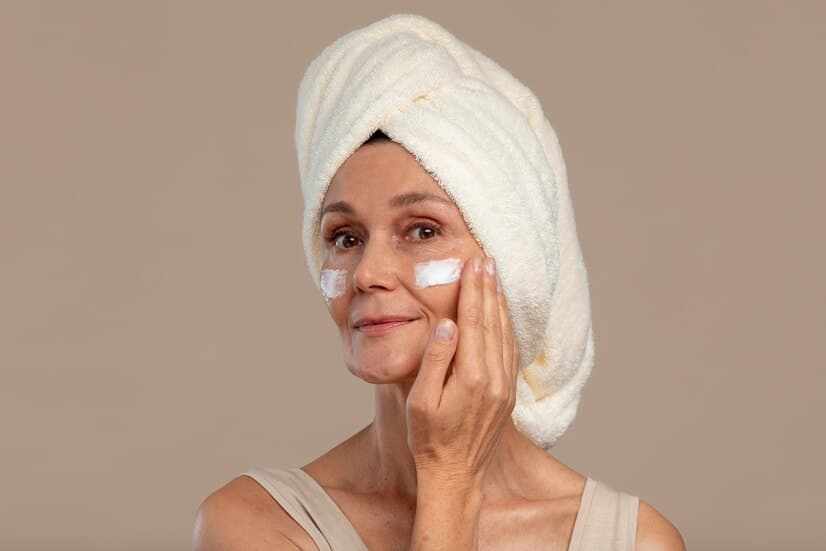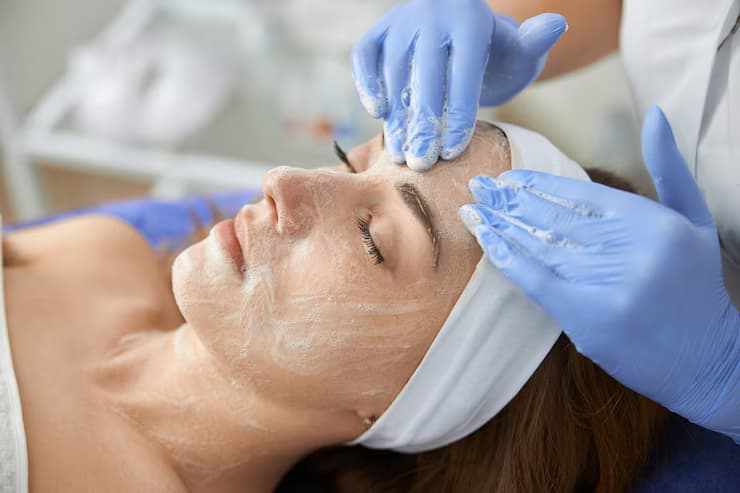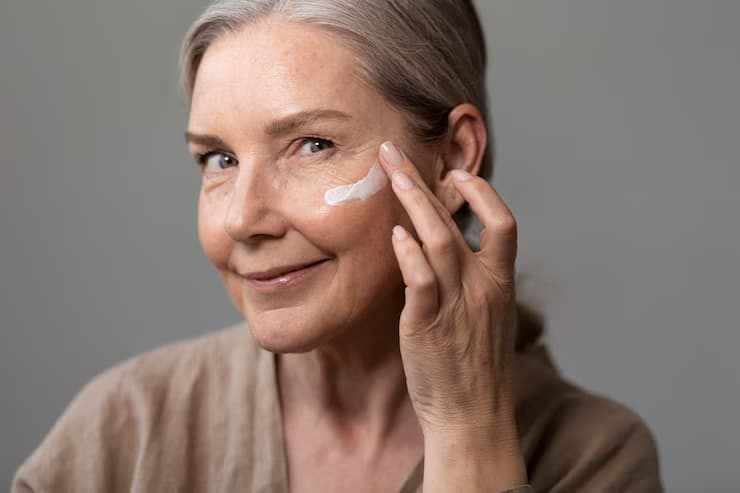
Hydrocortisone cream is a topical corticosteroid that many people rely on for its anti-inflammatory and anti-itching properties. While it can be effective for treating various skin conditions, such as eczema, psoriasis, and allergic reactions, using hydrocortisone cream for face requires caution. The skin on the face is more delicate and sensitive than on other parts of the body, making it essential to understand how to use this medication safely to avoid potential side effects. This article will explore the proper use of hydrocortisone cream for the face, the conditions it can treat, and tips to minimize the risk of side effects.
Understanding Hydrocortisone Cream
Hydrocortisone is a synthetic corticosteroid that mimics the effects of cortisol, a hormone produced by the adrenal glands. When applied topically, hydrocortisone cream works by suppressing inflammation, reducing redness, and alleviating itching. Its effectiveness makes it a popular choice for treating various skin conditions, but its potency requires careful application, especially on the face.
Common Uses of Hydrocortisone Cream for the Face
Hydrocortisone cream can be beneficial for several skin conditions, including:
Eczema: A chronic condition characterized by dry, itchy patches of skin.
Psoriasis: An autoimmune condition leading to thick, scaly patches on the skin.
Allergic Reactions: Skin reactions caused by allergens, resulting in redness and swelling.
Contact Dermatitis: Inflammation of the skin due to contact with irritants or allergens.
Insect Bites: Redness and swelling from insect stings or bites.
While hydrocortisone cream can provide relief for these conditions, it is crucial to use it correctly to avoid adverse effects.
Guidelines for Safe Use of Hydrocortisone Cream on the Face
1. Consult a Healthcare Professional
Before using hydrocortisone cream for the face, it is essential to consult a healthcare professional. A dermatologist can assess your skin condition and determine whether hydrocortisone is the appropriate treatment. They can also recommend the right concentration and duration of use based on your specific needs.
2. Choose the Right Concentration
Hydrocortisone creams come in various concentrations, typically ranging from 0.5% to 2.5%. For facial use, a lower concentration (such as 0.5% or 1%) is generally recommended to minimize the risk of side effects. Higher concentrations may be necessary for more severe conditions, but they should only be used under the guidance of a healthcare professional.
3. Conduct a Patch Test
Before applying hydrocortisone cream to your face, perform a patch test to check for any adverse reactions. Apply a small amount of the cream on a discreet area of skin, such as the inner forearm, and observe for any signs of irritation or allergic reactions over 24 to 48 hours. If no adverse reactions occur, it may be safe to use the cream on your face.
4. Cleanse the Skin Thoroughly
Before applying hydrocortisone cream, ensure that your face is clean and dry. Use a gentle cleanser to remove any dirt, oil, or makeup. Pat your skin dry with a soft towel, avoiding any harsh rubbing that could irritate the skin. A clean surface allows for better absorption of the cream and minimizes the risk of irritation.
5. Apply a Thin Layer
When applying hydrocortisone cream to the face, use a thin layer. A small amount of cream is often sufficient to cover the affected area. Gently massage the cream into the skin using circular motions until it is fully absorbed. Avoid applying it on healthy skin surrounding the affected area, as this can lead to unnecessary exposure and potential side effects.
6. Frequency of Application
Hydrocortisone cream is typically applied once or twice a day, depending on the severity of the condition and the recommendation of a healthcare professional. It is crucial to follow the prescribed frequency to avoid overuse, which can lead to thinning of the skin, stretch marks, or other side effects.
7. Limit Duration of Use
Using hydrocortisone cream for extended periods can increase the risk of side effects, particularly on the face. Most healthcare professionals recommend limiting its use to a short duration, often 1 to 2 weeks, unless otherwise directed. If symptoms persist after this period, consult a healthcare professional for further evaluation and alternative treatment options.
8. Avoid Sensitive Areas
When applying hydrocortisone cream for the face, avoid sensitive areas such as the eyes, mouth, and nostrils. The skin in these areas is thinner and more sensitive, making it more susceptible to irritation. If hydrocortisone cream accidentally comes into contact with these areas, rinse thoroughly with water.
9. Monitor for Side Effects
While using hydrocortisone cream, pay attention to any adverse reactions. Common side effects may include:
Skin Thinning: Prolonged use can lead to atrophy of the skin, making it thinner and more fragile.
Stretch Marks: The skin may develop stretch marks with extended use.
Increased Sensitivity: Some individuals may develop increased sensitivity or irritation from the cream.
Discoloration: Changes in skin pigmentation may occur with prolonged use.
If any significant side effects occur, discontinue use and consult a healthcare professional immediately.
10. Complement with a Good Skincare Routine
To enhance the effectiveness of hydrocortisone cream and maintain overall skin health, it is essential to include a good skincare routine. Consider the following steps:
Moisturize: Use a gentle, hydrating moisturizer after applying hydrocortisone cream to help lock in moisture and maintain skin hydration. Look for moisturizers that contain soothing ingredients like aloe vera, hyaluronic acid, or ceramides.
Sun Protection: If using hydrocortisone cream during the day, apply a broad-spectrum sunscreen with at least SPF 30. Corticosteroids can make the skin more sensitive to sunlight, increasing the risk of sunburn.
Gentle Cleansing: Use a gentle cleanser to avoid stripping the skin of its natural oils. Avoid harsh scrubs or exfoliants that may irritate the skin further.
When to Seek Medical Attention
While hydrocortisone cream can be effective for many skin conditions, it is crucial to seek medical attention if:
Symptoms do not improve after a few days of treatment.
You experience severe skin reactions, such as swelling or blistering.
You notice signs of infection, such as increased redness, warmth, or pus.
You have underlying health conditions that may complicate the use of topical corticosteroids.
Consulting a healthcare professional will ensure that you receive appropriate care tailored to your specific situation.
Conclusion: Embrace Healthy Skin with MiQuest
Using hydrocortisone cream for the face can provide relief from various skin conditions when applied correctly and safely. By following the guidelines outlined in this article—such as consulting a healthcare professional, choosing the right concentration, and practicing proper application techniques—individuals can minimize the risk of side effects while enjoying the benefits of this effective treatment.
For those seeking to enhance their skincare routine and support their skin health, MiQuest offers a range of products designed to nourish and rejuvenate. Embrace your journey to healthy skin today with MiQuest and discover the transformative power of effective skincare!




Write a comment ...